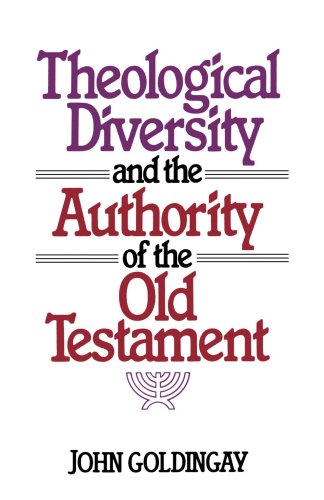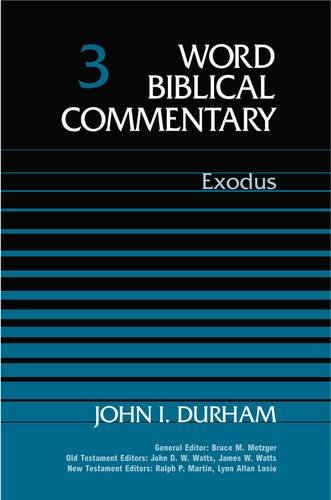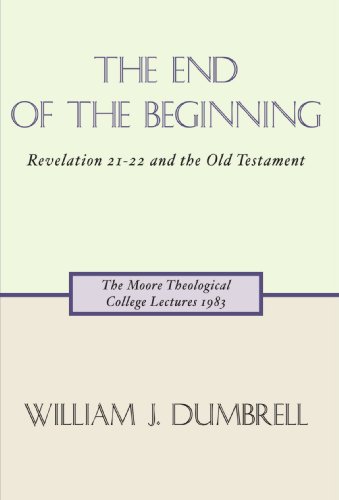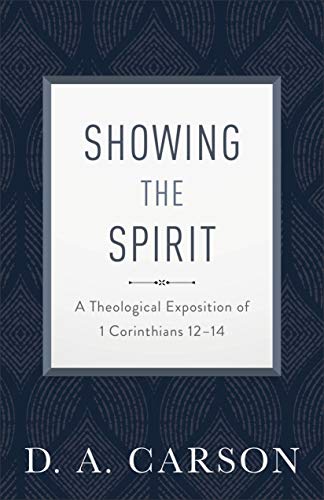Theological Diversity and the Authority of the Old Testament
Written by John Goldingay Reviewed By David G. DeboysThis learned and wide-ranging monograph explores a critical nexus of theological and hermeneutical issues (which is a major concern of current OT scholarship)—to see ‘how the diverse viewpoints reflected in the Old Testament may be acknowledged, interrelated, and allowed to function theologically’ (back cover). The extended review which follows is an attempt to orientate readers to the book’s argument. The review editor is grateful for Dr Goldingay’s assistance in preparing this review.
A substantial introductory chapter looks at the sorts of diversity to be found in the OT (diversity in the meaning of concepts, themes and institutions; in the messages of different parts of the OT; in the interpretation of particular events or motifs) and reasons for this (in diversity of authors, audiences and contexts, and in the ‘complexity of the realities of which the OT speaks’ [p. 14]), concluding that ‘diversity is an essential characteristic of OT tradition’ (p. 12). Thereafter the book is structured in three Parts, each of two chapters. Each Part outlines in the first of the two chapters a particular strategy for dealing with the OT’s theological diversity, while in the second that approach is applied to a particular subject. Misunderstanding will arise unless it is clearly perceived that Goldingay writes the book using the standard critical methodology of OT scholarship.
A significant section of the Introduction defines four different types of ‘contradiction’ said to be found in the OT. Whereas ‘formal contradiction involves a difference at the level of words which is not a difference at the level of substance’ (p. 16), ‘contextual contradiction denotes a difference reflecting the variety in circumstances which different statements address’. On the other hand, ‘substantial contradiction involves a true divergence in viewpoint on the part of speakers whose disagreement is neither merely verbal nor merely contextual’ (though Goldingay notes that ‘for all the differences between them, they arise from faith in the one Yahweh’ [p. 24]), while ‘fundamental contradiction denotes a disagreement which is a matter of substance and which indicates a basic disharmony at the level of “ethical stance” or “religious outlook” ’. This last section is a trifle too hypothetical. Here Goldingay suggests that: ‘The ultimate form of this disharmony related by the OT is the conflict reported in Elijah’s day, for instance, over whether Baal is God or Yahweh is God. In Jeremiah’s day it is the question of allegiance to Yahweh or to the Queen of Heaven’ (p. 24). As far as one can see, however much the allegiance of the populace in Israel or Judah vacillated between Yahweh or Baal or the queen of heaven, the OT nowhere suggests that faith in Baal or the queen of heaven is a legitimate option.
Goldingay next addresses the fundamental question, ‘Is it appropriate to look for theological coherence in the Old Testament?’ (p. 25) given the existence of diverse viewpoints. Goldingay argues that ‘it is a reasonable working assumption’ that the community to which the OT belonged believed its Scriptures to be theologically coherent. He suggests that ‘only by presupposing that such a coherence exists [because of the community’s belief ‘that in some sense it receives the scriptures of God’] … shall we be able to discover what that coherence is (or to confirm whether or not it exists)’ (p. 26). Following D. Patrick, Goldingay in fact suggests that in the early development of the OT tradition portrayal of ‘the one God of the one community’ functioned canonically in that it ‘allowed that tradition to embrace only works in which he could be recognized’ (p. 27). Acknowledging that ‘the exegetical methods by which Jews and Christians two millenia ago sought to vindicate this conviction [of theological coherence] do not find acceptance in the world of twentieth-century scholarship’ impels Goldingay to discover ‘whether this conviction can be vindicated by the methods used by scholarship’, and beyond that to ‘release the value of the OT’s diversity in the context of Christian theology and biblical interpretation’ (p. 28).
In Part I Goldingay discusses ‘A Contextual or Historical Approach’. ‘One approach to theological diversity in the OT is simply to acknowledge the variety of viewpoints and to accept all of them as potentially instructive’ (p. 29). Among the ‘range of insights incorporated within the OT.… I may find some insight that relates to my own situation’ (p. 29; ‘insight’ is a word which permeates the book; it overlaps with what others call ‘revelation’). It can be suggested that the diverse viewpoints have a ‘formal’ unity because ‘all these writings belong to one history; they are the deposit of the historical experience of Israel in its pre-Christian period. Together they are … the deposit of one unified religious tradition’ (p. 30), but this is an ‘organic unity’ not a ‘structured unity of a carefully articulated statement’. Goldingay notes that even within certain biblical books diverse viewpoints co-exist: an obvious example being the Psalter which embodies an enormous range of responses to God. But the viewpoints within the OT are asserted to have not merely ‘formal’ but also ‘material’ unity: ‘First, they not only derive from and belong to one people: they concern one people’; second, as the God of the ‘people of God’ God himself ‘is the keystone that holds the OT’s diverse materials into one building’ (p. 32). ‘Third, as Israel’s history provides a fundamental aspect of the OT’s formal unity, so its history constitutes one aspect of its material unity.’
Goldingay explains unity in relation to diversity on a contextual approach as relating to the fact that different speakers respond to different contexts ‘in Yahweh’s name’. Much that Goldingay has to say is highly perceptive. He is sensitive to the need to avoid having our prejudices reinforced by a selective concentration on those traditions in the OT which most appeal to us (the danger ‘that we look down the well and see our own faces at the bottom’). He acknowledges that simply accepting diversity in OT faith may reflect our own situation rather than that of the authors of Scripture. Using the model of a trajectory in relation to an OT idea can help us to ‘extrapolate the path it might be expected to take in relationship to questions which are not raised in the OT.… Thus the contextual nature of the OT also functions as a model for our attempt to see what new thing God may have to say in contexts that were unknown in ancient Israel’ (p. 36). The material in the OT is to be seen as building material in the task of theological construction, rather than as the finished product itself. It is not sufficient to stop with diachronic analyses, we must go on to synthesis.
Stressing the need to relate a historical understanding of the text to a historical understanding of the contemporary situation, and noting the danger of getting either wrong, Goldingay avers that sometimes a contextual/historical approach cannot explain the divergent responses to be found in Scripture: ‘Sometimes Scripture offers several possible paradigmatic responses to a recurrent set of circumstances: for instance, for a landless or insecure people, is the matching scriptural message that of Joshua (attack), that of the exile (wait for Yahweh to act), or that of some postexilic situation (accept the situation)?’ (p. 37). But is this so? To achieve these ‘paradigms’ Goldingay has had to isolate the biblical ‘message’ from the historical situation which gave rise to it; and it is unclear on what basis he moves hermeneutically from the ancient sacral context (where the nation of Israel is also the people of God) to today’s non-sacral situation (where the people of God is not co-extensive with any national group). To take one of his examples, the OT never suggests that Joshua’s means of entry into Canaan was to be paradigmatic for any other group of people. (Much later in the book Goldingay has a more balanced understanding of what was involved when he discusses the ‘conquest’ in his section on holy war in Deuteronomy, pp. 162–163.) Yet it is undoubtedly true that while ‘All the OT’s perspectives on the people of God or on the land may contain insights … all those insights cannot be normative in the same way at the same time’ (p. 37).
Are some contexts more illuminating than others? In short, yes. Developing the idea of a trajectory, Goldingay suggests that ‘The whole trajectory is potentially illuminating.… It is not the high point of the trajectory that alone counts’ (p. 42). Applying this to the question of the relationship of law and covenant, Goldingay comments: ‘the law fulfils many theological functions within scripture. It provides a basis for the declaration of judgment, the key to avoiding judgment, and the explanation of the experience of judgment’ (p. 47). It has a different function in different situations. ‘But one needs to ask whether any particular biblical context allows the essential significance of law to emerge more clearly than others. Does the trajectory traced by law have a high point?’ Noth’s position, as modified by subsequent scholarship, ‘implies that it does. Specific instructions on the content of human behaviour before God are most at home in the context of a declaration of the lordship of God over the lives of the beings on whose behalf he has acted in love and power, both in creation and redemption’ (pp. 47–48). Other significances of law derive from the covenant significance.
Applying the trajectory model to ‘life, death, and the possibility of afterlife’ evinces these striking comments: ‘The variety of views in the OT accumulates, and the earlier have to be read in the context of the latter. One cannot simply revert to an earlier view as if the later ones had not emerged’ (p. 56). On the other hand, what is older is not rejected: ‘The old is not abandoned but preserved and set in a new light. The history of revelation is not a journey toward truth, but a journey which starts from truth—though not a static doctrinal truth’ (p. 56). Summing up this section, the need is noted for the interpreter to analyse both the contexts and the interrelationships of themes in those contexts as part of the task of OT theology.
In Part I Chapter 3 Goldingay offers ‘A Contextualizing Study of “the People of God” in the Old Testament’. Here he traces the changing fortunes of Israel from ‘wandering clan’ through ‘theocratic nation’ and ‘institutional state’ to ‘afflicted remnant’ and ‘the community of promise’, concluding with ‘the continuing story of the people of God in Judaism and Christianity’. The chapter is thought-provoking and abounds in material that demands to be quoted. Goldingay is well aware on the one hand that ‘God’s people is a clearly identifiable social entity, for a significant period an actual nation’ (p. 60), yet ‘Israel actually threw off statehood along with monarchy with remarkable ease—“the state as such was somewhat of a borrowed garment for Israel” [von Rad]. They had been the people of Yahweh before, and could be after’ (p. 77). ‘To the extent that the people of God is where the kingship of God is a reality (a notion given outward form by the theocratic nation), it forms a microcosm of what the whole world is called to be’ (p. 74). Israel’s status is dependent on her relationship with Yahweh: if ‘the people of God is not a means of God’s revelation, but a threat to it; for the sake of that revelation Israel therefore has to be cast off. The people of God has no security independent of their obedience’ (p. 75). And when the community is faithless ‘God will reveal himself through them by judging them.… They thus represent in microcosm the judgment of all those who go against God’ (p. 75).
Goldingay is acute on the remnant: ‘when God abandons the people as a whole, it is not to the individual that he turns’ (p. 73). Goldingay suggests that the OT embodies four responses to the consequent post-exilic situation, those of ‘a worshipping community’ (e.g. Chronicles; p. 77), ‘a waiting community’ (e.g. Haggai, Zechariah; p. 78), a community ‘obeying the pentateuchal law’ (e.g. certain Psalms; p. 79), a ‘questioning’community (e.g. Job, Ecclesiastes; p. 80), though it is less than obvious that either Job or Ecclesiastes fits this scenario. Goldingay suggests that ‘some of these modes of [Israel’s] being are of more lasting significance than others’ (p. 92) and he argues that ‘the people of God cannot take it for granted that each of these models of what it means to be the people of God is equally available for appropriation’ (p. 93). His final answer to the question ‘when is Israel really Israel?’ [Gunneweg] (p. 94) is ‘when the vision of the theocratic nation and the vision of the afflicted servant come together in the exile’ (p. 96).
Goldingay moves on in Part II to consider ‘An Evaluative or Critical Approach’ under the subheading ‘Can we affirm some viewpoints and criticize others?’ The answer to which is, basically, yes. Among the evaluative approaches Goldingay discusses is that of development where he correctly rejects an evolutionary approach to the OT. He believes that ‘There is, of course, development in the sense of change, but this development follows a zigzag line, an up-and-down one in which insights are lost as well as gained’ (pp. 103–104). The NT is not accepted as an adequate control on the OT, for ‘Even the NT, however, is usually reckoned to contain material that falls short of an absolute standard’ (p. 110)—though where we might have access to that absolute standard, if not in Scripture, is not indicated. Goldingay is concerned to allow the OT ‘to determine what is central to its faith and what is peripheral’ (p. 111), and in this quest he concludes that if ‘we have not yet discovered the single correct key to producing a satisfactory final synthesis of OT faith, this suggests that there is no such key’ (p. 115). Consequently there is need to reflect that in our handling of the OT—and ‘a multiplicity of approaches will lead to a multiplicity of insights’ (p. 115).
Goldingay takes the teaching of Deuteronomy as his test case and examines it under the aspects of ‘Behavioural Values’, ‘Theological Perspective’ and ‘Pastoral Strategy’. There is a fine exposition on pages 142–143 of what it meant for Israel to be Yahweh’s special people. An important section is Goldingay’s discussion of ‘Deuteronomy’s compromises’ where he well portrays the tension which any legislation must embody between what may be deemed to be desirable and what is in fact realistically attainable. When Goldingay concludes the section on theological perspective he highlights what he sees as a ‘limitation’ in Deuteronomy’s theology. Believing Deuteronomy to date from the 7th century BC, he sees Deuteronomy’s stress on ‘Israel as Yahweh’s people and Yahweh as Israel’s God’ as relating to ‘what it saw the situation to demand’, but ‘this is not all that needs to be said about Israel or about Yahweh. By focusing on Israel’s privileged calling and responsibility and the importance of Israel’s distancing itself from the nations, Deuteronomy obscures the fact that it is ultimately for the sake of the nations that Israel is called at all’ (p. 152, my emphasis). This is strong language and others may well think that the evidence demands a different reading. (It is an interesting point how far an earlier dating—dependent on vassal treaty analogies—would affect Goldingay’s assessment. Goldingay had earlier noted ‘the covenant shape of Deuteronomy’ (p. 66) while leaving open the question of the relationship of form to date.)
Part III, ‘A Unifying or Constructive Approach’, seeks to answer the question ‘Can we formulate one OT theology?’ (p. 167). The reason for Goldingay’s use of the word constructive is that, as noted above, he conceives the task of OT theology as like building: ‘working with these [OT] materials, we seek to construct a whole which does not correspond to anything that any individual OT writer knew, but which does justice to what he knew’ (p. 184). That suggestion is perhaps unobjectionable, but Goldingay continues: ‘OT theology’s task is a constructive one in a further sense. In analysing, explicating, articulating, and defining the theological implications of OT faith, interpreters are not merely describing that faith; they are creating new concepts of God and the world through the interaction between what the OT actually says and the tools they bring to it’ (p. 185, emphasis mine). Goldingay attacks Stendhal here for arguing that OT theology should be ‘purely descriptive’, but it is unclear that Goldingay’s position does not in fact undermine the notion that what we have in Scripture is—as well as being human word—divine revelation.
Grouses: one occasionally wishes that, in the midst of his interaction with a range of scholarly opinion, it was a little clearer what is Goldingay’s view: for instance, a substantial quote from L. R. Bailey on death (pp. 33–34) might be thought to represent Goldingay’s own position as no critique is offered—until page 39, which is a trifle disconnected! Goldingay’s caution is evident at many points, yet one sometimes feels that the evidence has been unnecessarily read in a manner designed to maximize differences. Despite his encyclopaedic reading (cf. the forty-nine-page bibliography) there is little interaction with conservative OT scholarship; for instance, M. G. Kline’s work on the covenantal dimensions of canon or his concept of intrusive ethics is nowhere picked up—the latter idea being important in evaluating the morality of the ‘ban’. A second edition might benefit from a revised title omitting the word ‘authority’—hardly the subject of the book. A second edition would be somewhat more approachable if the quite unnecessary untransliterated Hebrew was excised.
In conclusion, it is patent that Goldingay—using throughout the methodology of contemporary scholarship—has made a major contribution to the ongoing discussion of unity and diversity in the OT, and for this he deserves our thanks. Few are likely to rival his grasp of the issues, his command of the scholarly literature or his perspicacious writing. It is a book that would form an excellent basis for discussion in a seminar over a term. It is certainly an indispensable book for anyone wishing to appreciate and appropriate the theological largesse of the OT.
David G. Deboys






